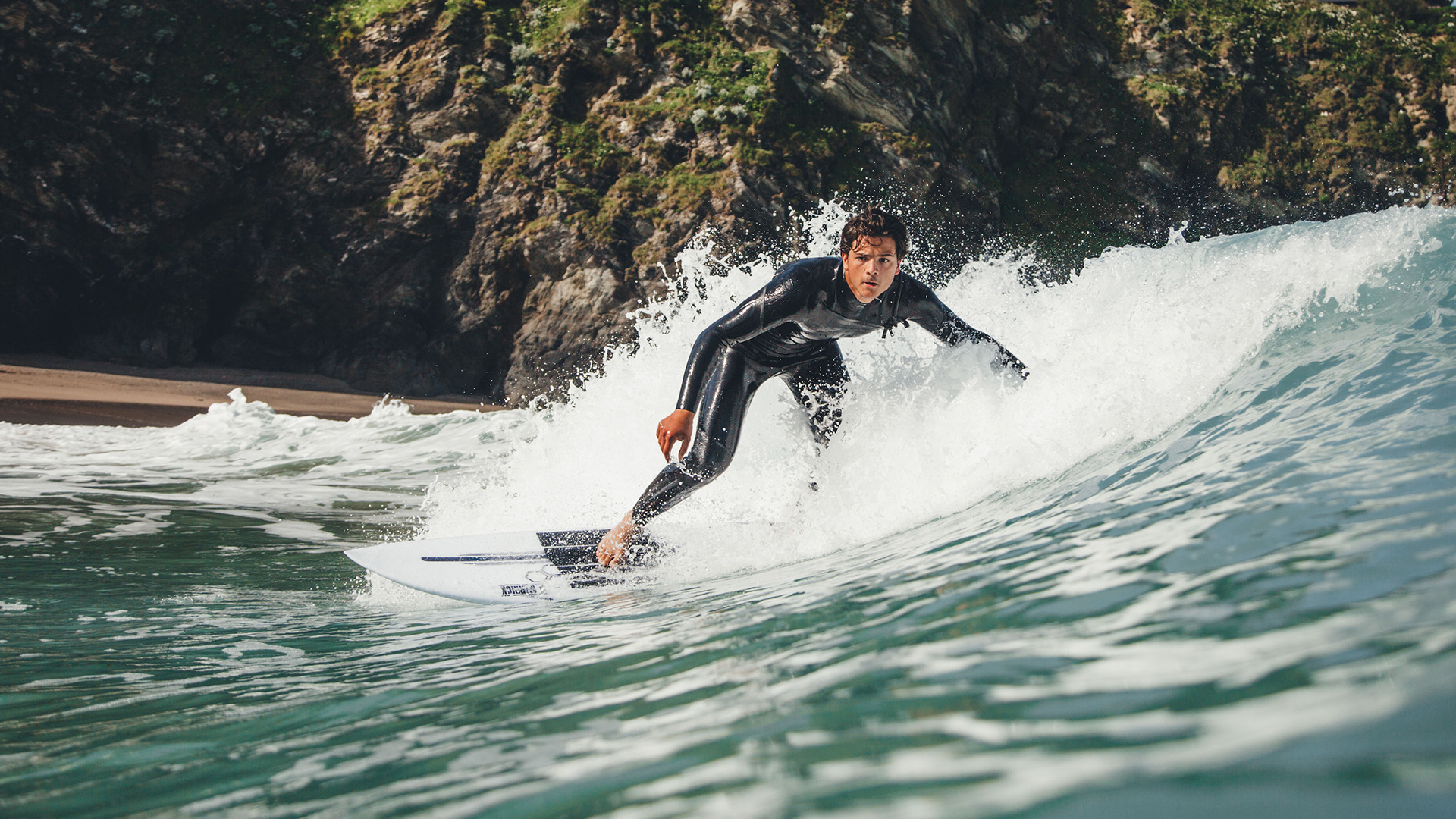
Jack O’Neill (yes, he of O’Neill surf brand fame) is widely credited for coming up with the first wetsuit that was specifically designed for use when surfing or enjoying other water-based sports.
The wave-gliding legend, who injured his eye during a gnarly board-based accident, is instantly recognisable from his pirate-like appearance, but also contributed massively to the sport, taking learnings from early wetsuit pioneers, such as American businessman and diver Bob Meistrell, as well as US Navy researcher Hugh Bradner, to develop the wetsuit into something we recognise today.
However, these early cold water enthusiasts, all of whom quickly realised that trapping a thin layer of water between skin and suit would keep the wearer warmer for longer, turned to American chemical company DuPont for the main material in their inventions.
That particular material is a synthetic rubber called neoprene, a material used in most of the best wetsuits of yesteryear. Chosen for its excellent insulation properties and flexibility, it allowed folk like Jack O’Neill to experiment with more athletic designs that would allow surfers, swimmers and more to move freely while staying warm.
Despite wetsuit technology improving at a rapid rate over the past few decades, it has also come to light that the neoprene used in their manufacture has a significant impact on the environment, as well as those forced to produce it and work with it.
A reliance on fossil fuels
Most neoprene wetsuits are derived from the petrochemical industry, so require fossil fuels to manufacture. It is rare these days to find a suit that is pure polychloroprene-based neoprene, as this tends to be inflexible and not suitable for use in high-end, high-performance suits.
Today, it is more likely you’ll find neoprene fashioned from chloroprene, but instead of using petroleum-based ingredients, it now uses “calcium carbonate from limestone to form chloroprene rubber chips," according to wetsuit company SRFACE.
Despite distancing itself mildly from the petrochemical industry, limestone still poses an issue due to the fact that it is a mined, finite resource. The mining process harms the environment and requires a lot of energy, with the associated carbon emissions of any mining endeavour.

Neoprene manufacturing is toxic
Film director Lewis Arnold and writer Chris Nelson shed light on the wetsuit industry in a recent documentary dubbed The Big Sea.
The film’s sole aim is to highlight how the $10 billion global surf industry’s reliance on neoprene is causing major health concerns among the communities tasked with manufacturing it.
The working environment is toxic, and the chloroprene emissions produced by factories creating neoprene increase the cancer risk of those around, according to the makers of The Big Sea.
Wetsuits are difficult to dispose of
There are a number of groups and projects around the globe that have been set up in order to recycle old wetsuits, taking functioning neoprene panels and creating new suits -or at least parts of new suits - with products that have reached the end of their useful life.
Given the expense of a modern wetsuit, many folks are also looking to sell their old wetsuits on the used market to try and scrape back some initial investment. But the fact is, many remain discarded or sent to landfills.
Finisterre founder Tom Kay told WaveLength Magazine that “an estimated 380 tonnes of neoprene waste is created each year”, which is why the company has a successful wetsuit recycling programme that aims to turn old into new (read more about this at Finisterre's website).

What is being done?
One of the leading neoprene alternatives making waves in the surf and wider watersports world is Yulex, a natural neoprene alternative derived from the guayule plant.
Native to the southwestern United States and northern Mexico, the guayule plant offers a sustainable source for wetsuit production, according to the company behind it.
Yulex is particularly appealing because it doesn't rely on the petroleum-based foundation of traditional neoprene; guayule is a renewable resource that requires less water and land than conventional neoprene sources and natural rubber, while the material is also biodegradable.
Early Yulex wetsuits were stiff and unforgiving, especially those thicker models aimed at cold water enthusiasts, but like most things, the technology is moving on at pace, and major brands like Patagonia and the aforementioned Finisterre (both external links) are producing high-quality suits made with Yulex and other neoprene alternatives.
In addition to Yulex, wetsuit manufacturers are increasingly looking at including recycled rubber and plastics into their suits, as well as engineering algae-based materials and biodegradable elastomers that assist in the breakdown process once a suit has reached its end of life.
As with most things today, it pays to research exactly what is going into a product and how the manufacturer is attempting to combat environmental issues.
The same can be said for wetsuits, as most major brands now make it clear exactly where the materials are derived from and the percentage of recycled content used. Plus, many now offer recycling programmes when you're done with the suit.
Before purchasing, do your research and make an informed choice. Yes, alternatives like Yulex are currently expensive, but the more folks that jump on board, the more the cost comes down.







